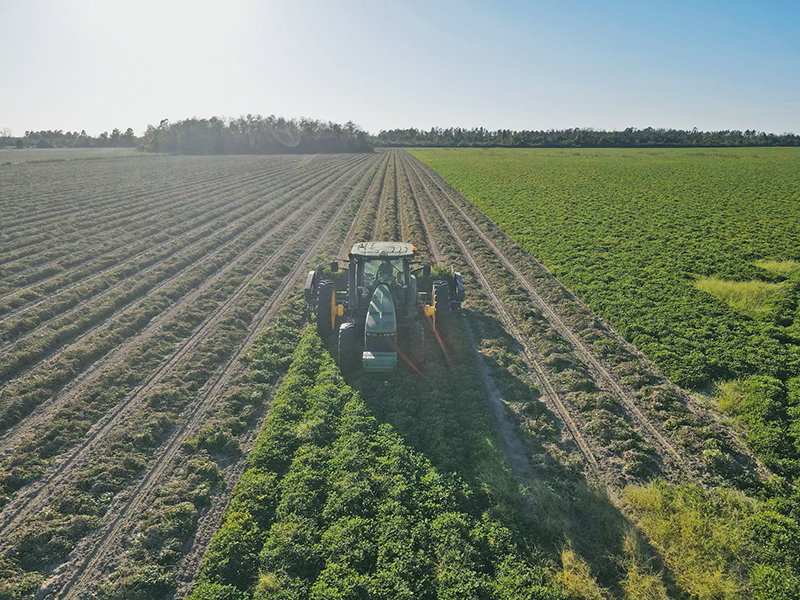Another year has almost come and gone for Central Panhandle (Jackson, Calhoun, Washington, and Holmes County) farmers. Peanuts and cotton planted back in April and May have reached maturity and have mostly been harvested. So, with the end of the season upon us, let’s take a moment to look back over the cropping season that was and appreciate the work our county farmers have put in to ensure that all of us have access to a safe, secure, and affordable food supply.
The story of the 2024 cropping season (April-October) was one of unpredictable weather and economic challenges. We started strong with an unusually rainy April and May, and excellent conditions for crops to get established. These favorable conditions didn’t last. June brought lower than normal rainfall and unseasonably hot weather, and August continued the trend, with limited rainfall and temperatures that often exceeded 100 degrees – exactly when peanuts and cotton plants are trying to fill pods and bolls respectively. What looked like a disaster was saved in September by tropical weather. While Hurricane Helene delivered devastation just 70-100 miles east, it brought us yield saving rainfall to the Central Panhandle. So, though non-irrigated county crop yields in 2024 aren’t ideal in many fields, it could have been much worse!
–
Economics are another issue. The price of peanuts has been relatively good for several consecutive years, but have not kept up with soaring input costs. The main concern is that peanut’s most important rotation partner, cotton, has been hovering at or below 70 cents/lb all year, under the cost of production for many farmers. To quote, Dr. Don Shurley, Emeritus Cotton Economist at the University of Georgia, “These prices are unprofitable and unsustainable… If any small profit or breakeven is made on cotton this year, it will likely be the result of a combination of higher-than-normal yields, crop insurance, disaster assistance, and possible PLC or ARP payment. Still, even with all these things, it will be very difficult to avoid loss at these prices.” This is bad news for local growers. If the price of cotton continues to stay this low, growers will be forced to increase their peanut acreages and push their peanut rotations shorter. Increased acreage means more supply and lower prices and shorter rotations create increased insect/disease concerns and reduced yields. Not a rosy outlook unless something in the cotton market changes significantly.
Despite all the negativity around extremely unpredictable weather patterns, persistently low prices, and the various other challenges they have to navigate, our local farmers continue to display grit and determination in producing the best crop they can, as they always have. Though it goes unnoticed and unappreciated in many places, farmers’ work tending the earth is the reason that you can run down to your local grocery store and be assured they’ll have plenty of safe, relatively affordable food. So, the next time you meet a cotton picker, a peanut harvester, or semi-truck hauling peanuts on the highway, be patient with them and thankful for what they do.
- Stay Ahead of Peanut Fungal Pathogens This Summer - August 8, 2025
- Panhandle Cotton Acres Are Down in 2025– Here’s the Reason - July 11, 2025
- It Snowed, But Has This Been a Historically Cold Winter? What the Data Says. - January 31, 2025

